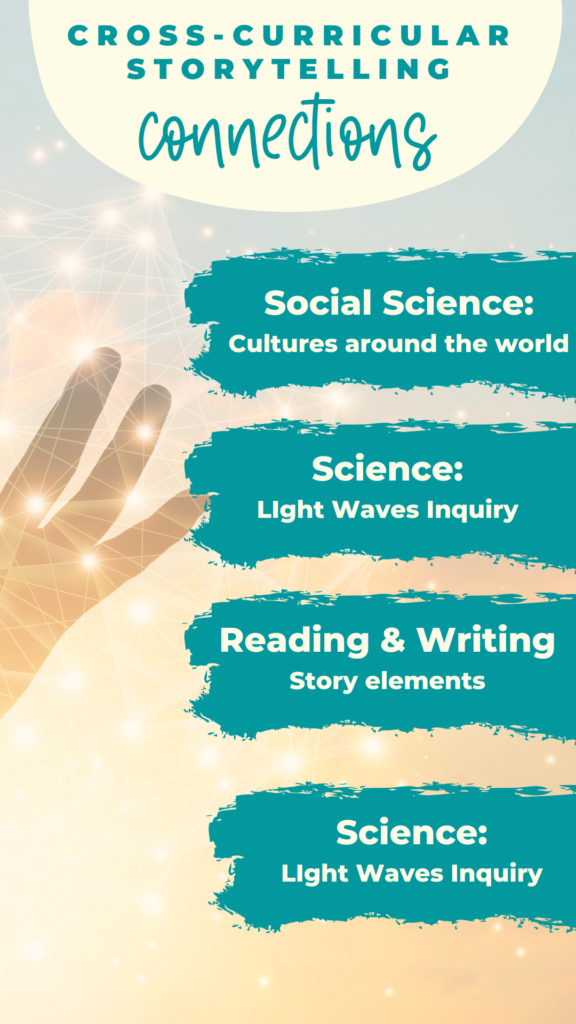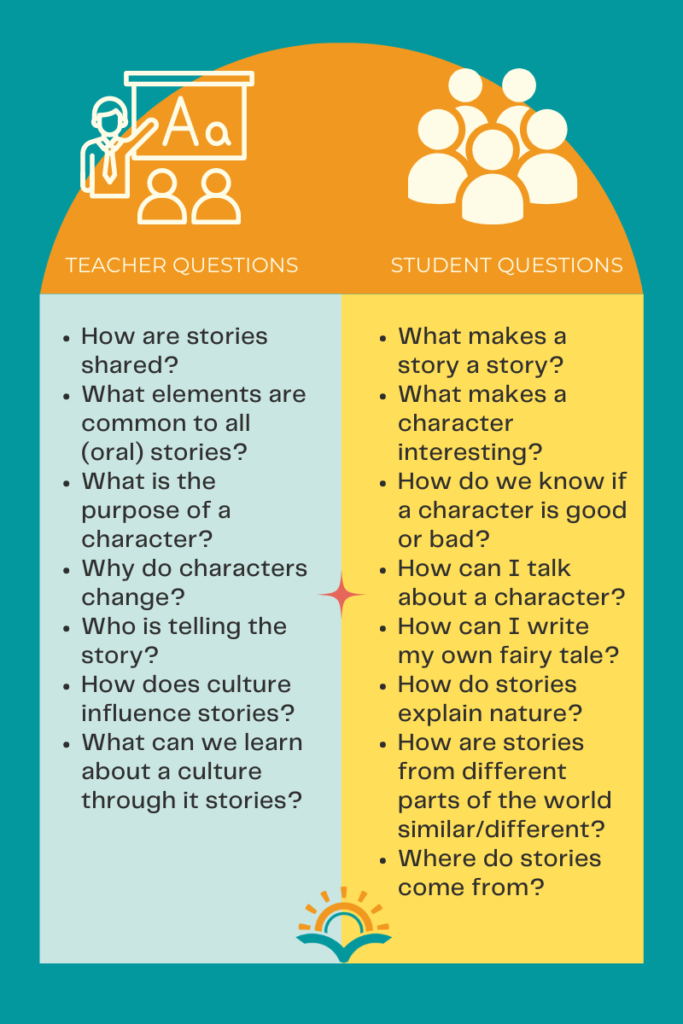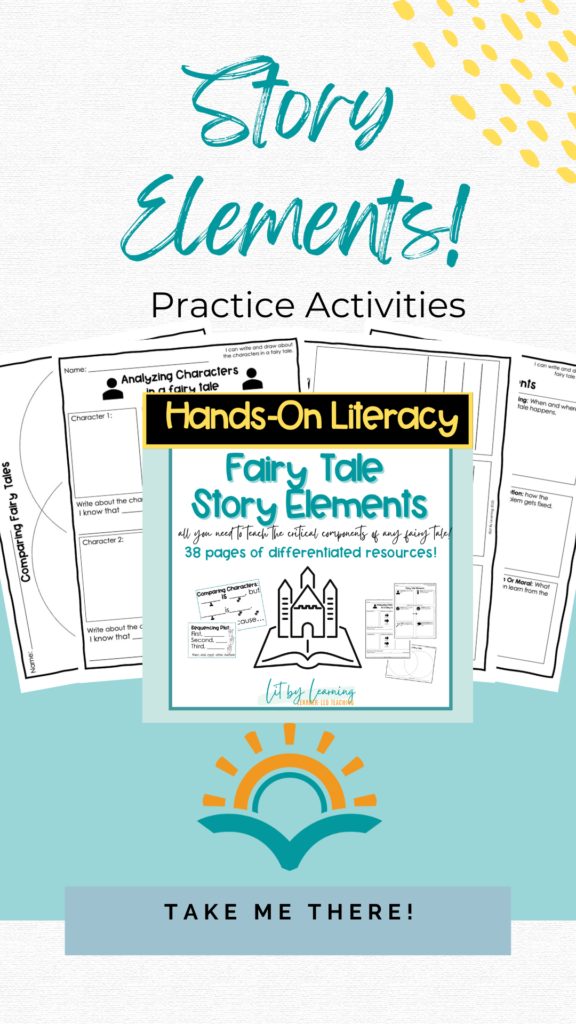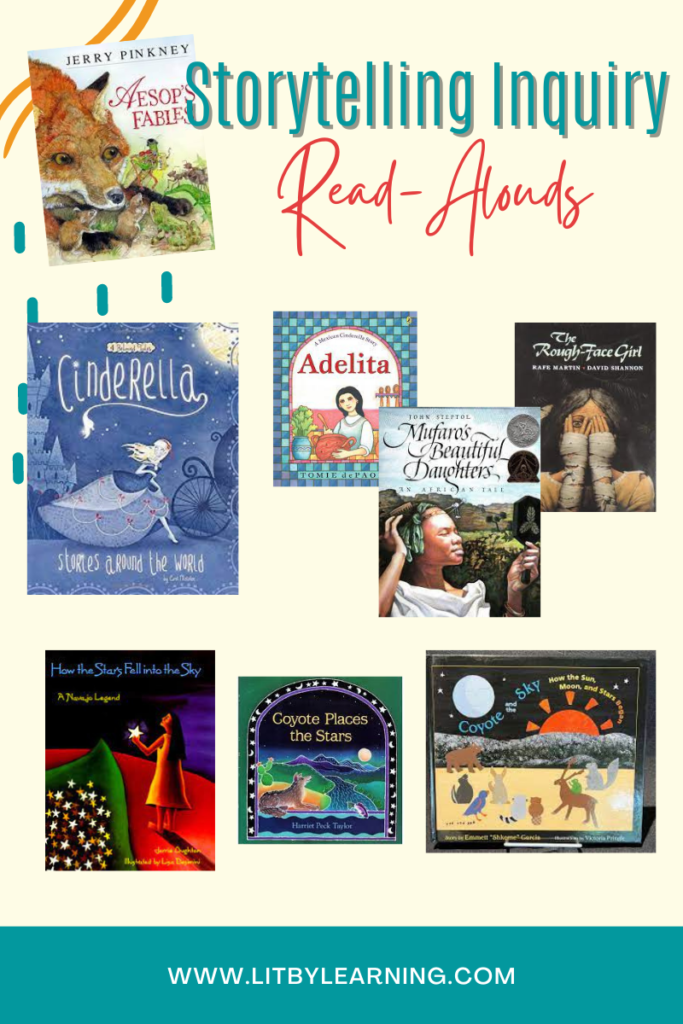Elementary teachers, are you trying to be more cross-curricular in your pedagogy? Looking to create more interdisciplinary connections across your academic day? Read on for how my team and I created a cross-curricular inquiry into stories from around the world.
Real quick: did you get your free guide yet?
If you’re here, I’m guessing we have lots to learn from each other! I’ve created a checklist and reflection guide about what I do to make my own classroom more student-centered and learner-led – and I’d love it to send it to you for free!

A brief note on cross-curricular unit planning
Simply put, cross curricular teaching is brain-friendly: Your students don’t think in siloed subject matters. When it’s math time, they don’t suddenly stop thinking about the morning’s read-aloud. Teaching cross-curricularly works WITH their brains and encourages their natural ability to make links.
“We have gone about as far as we can go with isolated instruction and learning. While it may have served the purpose for the older generations, it does not meet the deeper learning needs of students today and tomorrow.”
Ben Johnson, Edutopia
The bones of this cross-curricular storytelling unit
As teachers at an International Baccalaureate School, my first grade team and I have components we are required to incorporate when planning each interdisciplinary unit of study (inquiry). These IB PYP (primary years programme) essentials are the central idea, key concepts, & lines of inquiry. You’ll notice that the lines of inquiry directly address the key concepts. These are the bare bones of each cross-curricular unit we write.
Central Idea: Storytelling is a way to express culture and values.
Key Concepts: Perspective, reflection, form
Lines of Inquiry:
- Form: An inquiry into how effective stories are constructed.
- Perspective: An inquiry into what stories can teach us.
- Reflection: An inquiry into what a story can reveal about cultural values.

Essential questions for this cross-curricular unit
Building off of the components above, we also think of the essential questions we want to address. I talk more about what essential questions are in this post, but basically, they’re the unanswerable questions that drive our unit.
Here are the teacher-facing and student-facing essential questions for this storytelling unit:

Cross-Curricular Standards Addressed
We also align each unit of our inquiry based curriculum to national and state standards as well as to the Teaching for Justice Social Justice Standards.
Reading and Writing Standards
Here are the CCSS literacy standards addressed in this cross-curricular inquiry:
- CCSS.ELA-LITERACY.RL.1.3: Describe characters, settings, and major events in a story, using key details.
- CCSS.ELA-LITERACY.RL.1.6: Identify who is telling the story at various points in a text.
- CCSS.ELA-LITERACY.RL.1.7: Use illustrations and details in a story to describe its characters, setting, or events.
- CCSS.ELA-LITERACY.RL.1.9: Compare and contrast the adventures and experiences of characters in stories.
Here are the writing standards addressed:
- W.1.1: Write opinion pieces in which they introduce the topic or name the book they are writing about, state an opinion, supply a reason for the opinion, and provide some sense of closure.
- W.1.3: Write narratives in which they recount two or more appropriately sequenced events, include some details regarding what happened, use temporal words to signal event order, and provide some sense of closure.

Social Studies and Social Justice Standards
Next, here are the IL State Social Studies standards to which the unit is aligned:
- SS.IS.1.K-2: Create questions to help guide inquiry about a topic with guidance from adults and/or peers.
- SS.IS.1.K-2: Explore facts from various sources that can be used to answer the developed questions.
Here are the Teaching for Justice Social Justice standards addressed:
Students will recognize traits of the dominant culture, their home culture and other cultures, and understand how they negotiate their own identity in multiple spaces.
Diversity: I can describe some ways that I am similar to and different from people who share my identities and those who have other identities.
Science and Math Standards
Finally, here are the NGSS science and CCSS Math Standards correlated with this cross-curricular inquiry. Since these can be more challenging to connect to the Storytelling theme, I’ve included notes to tie the pieces together!
The NGSS Science Standards we address in this cross-curricular Storytelling Inquiry are:
| 1-PS4-2. | Make observations to construct an evidence-based account that objects in darkness can be seen only when illuminated. |
|---|---|
| 1-PS4-3. | Plan and conduct investigations to determine the effect of placing objects made with different materials in the path of a beam of light. |
| 1-PS4-4. | Use tools and materials to design and build a device that uses light or sound to solve the problem of communicating over a distance. |
Students will explore how light has been and can be used to communicate and tell stories. As part of the inquiry, the students create a shadow puppet show depicting their own original fable, fairy tale, or legend/porquoi tale.
Students also are being primed for the next unit’s science focus: Patterns in the Sky. As they read explore how and why the sun, stars, and moon got into the sky, it builds background knowledge in interest about the following NGSS standards:
- 1-ESS1-1. Use observations of the sun, moon, and stars to describe patterns that can be predicted.
- 1-ESS1-2. Make observations at different times of year to relate the amount of daylight to the time of year.
The CCSS Math Standards incorporated with this unit are:

Read more from Lit by Learning!
Looking for more on cross-curricular, student-centered elementary education? Check out these other posts!
- How Unpacked Standards Enable my Student-Centered Teaching Seriously, the secret sauce to my teaching practice.
- 3 Amanda Gorman Poems perfect for cross-curricular learning! Amanda Gorman, am I right? Here. are 3 of her poems just asking to be applied in your cross-curricular classroom!
- What does Hexagonal Thinking Look like? Tips for this connections-making teaching strategy!


